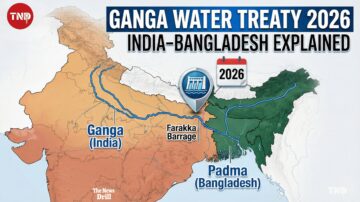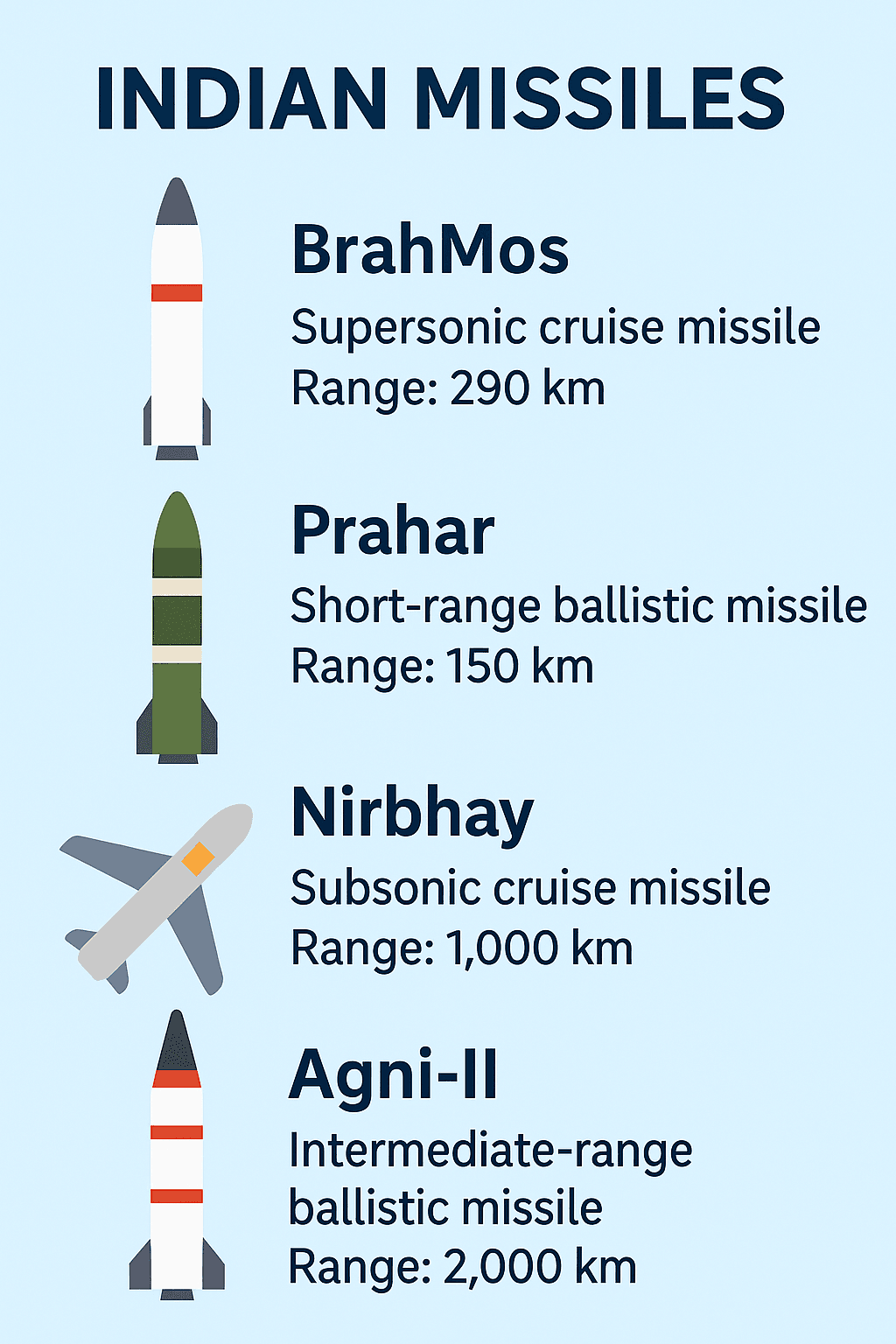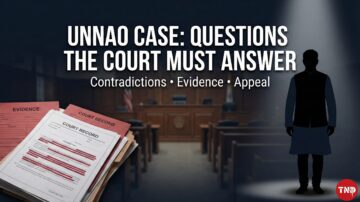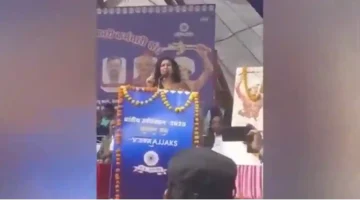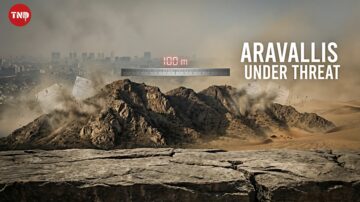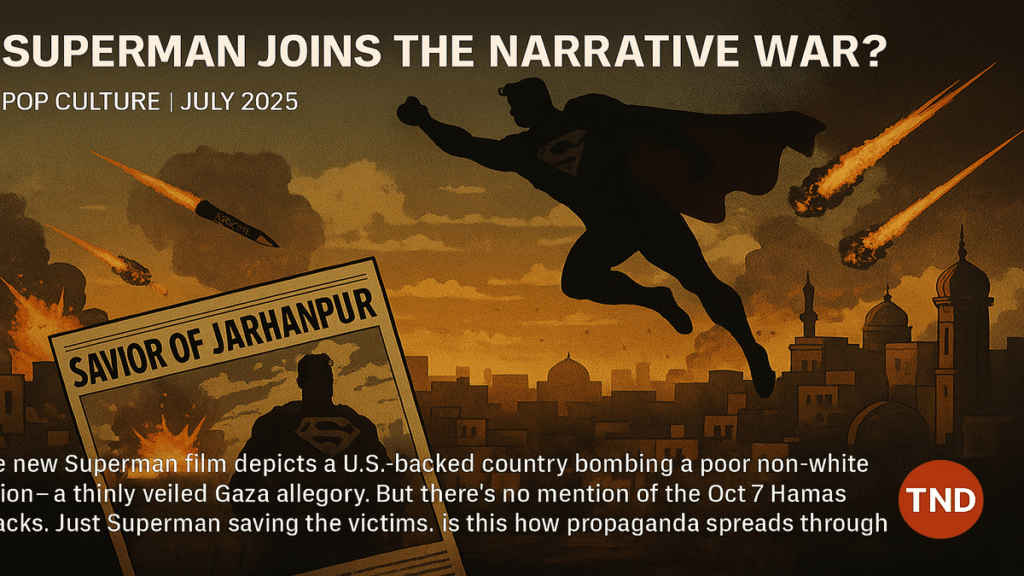
The latest installment of the Superman franchise was supposed to be a reboot an inspirational saga for a new generation. But instead, it has ignited a political firestorm.
Viewers around the world, particularly in Israel, are accusing the film of subtle but pointed anti Israel propaganda. The controversy lies not just in what the film shows but what it chooses to leave out. While wrapped in a veil of fictional countries and heroic action, many believe the movie offers a thinly disguised allegory for the Israel-Palestine conflict, and worse, it does so by manipulating public emotion through cinematic storytelling.
But is this just another superhero film reflecting world issues, or is it a carefully crafted tool in the global propaganda machine? Let’s break it down.
Boravia vs. Jarhanpur: Fiction or Political Metaphor?
At the heart of the movie is a fictional conflict between two nations: Boravia, a wealthy, militarized, U.S. backed superpower, and Jarhanpur, a poor, densely populated non-white nation.
The storyline is simple on the surface: Boravia launches a surprise aerial assault on Jarhanpur, triggering a humanitarian crisis. Superman, now younger and portrayed as a more “empathic outsider,” flies in to save innocent civilians and stop a second wave of destruction.
To the casual viewer, it may seem like a standard superhero narrative. But to a growing number of viewers especially Israeli and Jewish audiences the resemblance to Gaza under Israeli military action is unmistakable.
Although the film never once mentions Israel, Palestine, Hamas, or Gaza, the visual and narrative cues are heavily evocative. Civilians fleeing bombings, drones flying over refugee neighborhoods, border walls, and surveillance towers are all cinematic parallels to real world headlines.
In a time where global opinion on Israel is fiercely polarized, this choice has not gone unnoticed.
Missing from the Screen: October 7
One of the most pointed criticisms of the film is its total omission of the October 7 Hamas terror attacks on Israel, which led to the ongoing military operations in Gaza. Those events left over 1,200 Israelis dead, including children and civilians, and triggered Israel’s largest ground operation in years.
Critics argue that the Superman film intentionally ignores this context, and instead frames the “victim” country Jarhanpur as completely innocent, helpless, and unjustly attacked. Boravia is depicted as a ruthless aggressor with no backstory or provocation, making the metaphor one-sided and misleading.
This lack of balance raises a fundamental question: Is Superman being used to emotionally sway viewers against a real world nation by rewriting history through fiction?
A Hero Created by Jews, Now Turned Against Them?
Superman is not just any superhero. He is a cultural icon created in 1938 by two Jewish teenagers, Jerry Siegel and Joe Shuster, as a response to the growing rise of fascism in Europe. Originally, Superman stood for justice, peace, and protection of the weak from authoritarianism.
Many Jewish viewers now feel betrayed, seeing a character rooted in Jewish history and resistance being turned however symbolically against the Jewish state itself.
“How can a superhero born out of Jewish trauma now be manipulated to erase Israeli suffering?” asked one viral post on X. Others called it “a betrayal wrapped in a cape.”
Even more damning are the scenes showing Superman destroying Boravian missiles and saving Jarhanpur children, with no acknowledgment of terrorism, security threats, or provocation from Jarhanpur’s side. Critics argue this is a sanitized, emotionally rigged version of a real world crisis, designed to villainize one side and martyr the other.
Director Denies Allegory But Does That Matter?
Director James Gunn, in interviews, has denied any intentional reference to the Israel-Gaza conflict. He claims the script was completed before the latest escalation and was meant to explore broader themes of immigration, responsibility, and power.
But as many film theorists point out, “intent” doesn’t negate “interpretation.” Whether Gunn meant it or not, audiences are drawing clear parallels, especially as Superman saves children from bombings and halts military convoys reminiscent of modern day Middle Eastern conflict zones.
Art has always mirrored reality but when it selectively reflects only parts of the truth, it ceases to be neutral.
The Broader Problem: Pop Culture as Political Weapon
This controversy is not an isolated case. From Marvel films subtly critiquing U.S. military actions to Netflix dramas focusing on race and colonialism, pop culture is increasingly becoming a battleground for ideological warfare.
But there’s a fine line between raising awareness and promoting one sided narratives.
In the age of short attention spans and emotional storytelling, movies shape perception more powerfully than newspapers or think tanks ever could. When a blockbuster like Superman shows a story where only one side suffers and the other is cartoonishly evil, it frames real world conflicts in dangerously simplistic ways.
And when that story conveniently aligns with global anti-Israel sentiment, it raises serious questions about hidden messaging, subconscious bias, and deliberate erasure.
Conclusion: A Hero Caught in a War of Narratives
Superman has always stood for truth and justice. But in 2025, truth itself is contested, and justice depends on who’s telling the story.
The new Superman film might not name Israel or Gaza. But its metaphors, its omissions, and its sympathies speak louder than words. In trying to reimagine a timeless hero for modern audiences, the film may have unintentionally or deliberately joined a much larger war:
- The war over who gets to be the victim.
- The war over what truth gets remembered.
- The war over who controls the narrative.
In this version of reality, even Superman isn’t immune to propaganda.
Read More at: The News Drill
Follow us on X: @thenewsdrill
Disclaimer: The characters, places, and events mentioned such as “Boravia” and “Jarhanpur”are fictional as portrayed in the film. Any resemblance to real world nations or conflicts is interpretative. This content aims to critically examine narrative framing and potential political symbolism in pop culture. The News Drill does not endorse or oppose any political ideology depicted or inferred.


